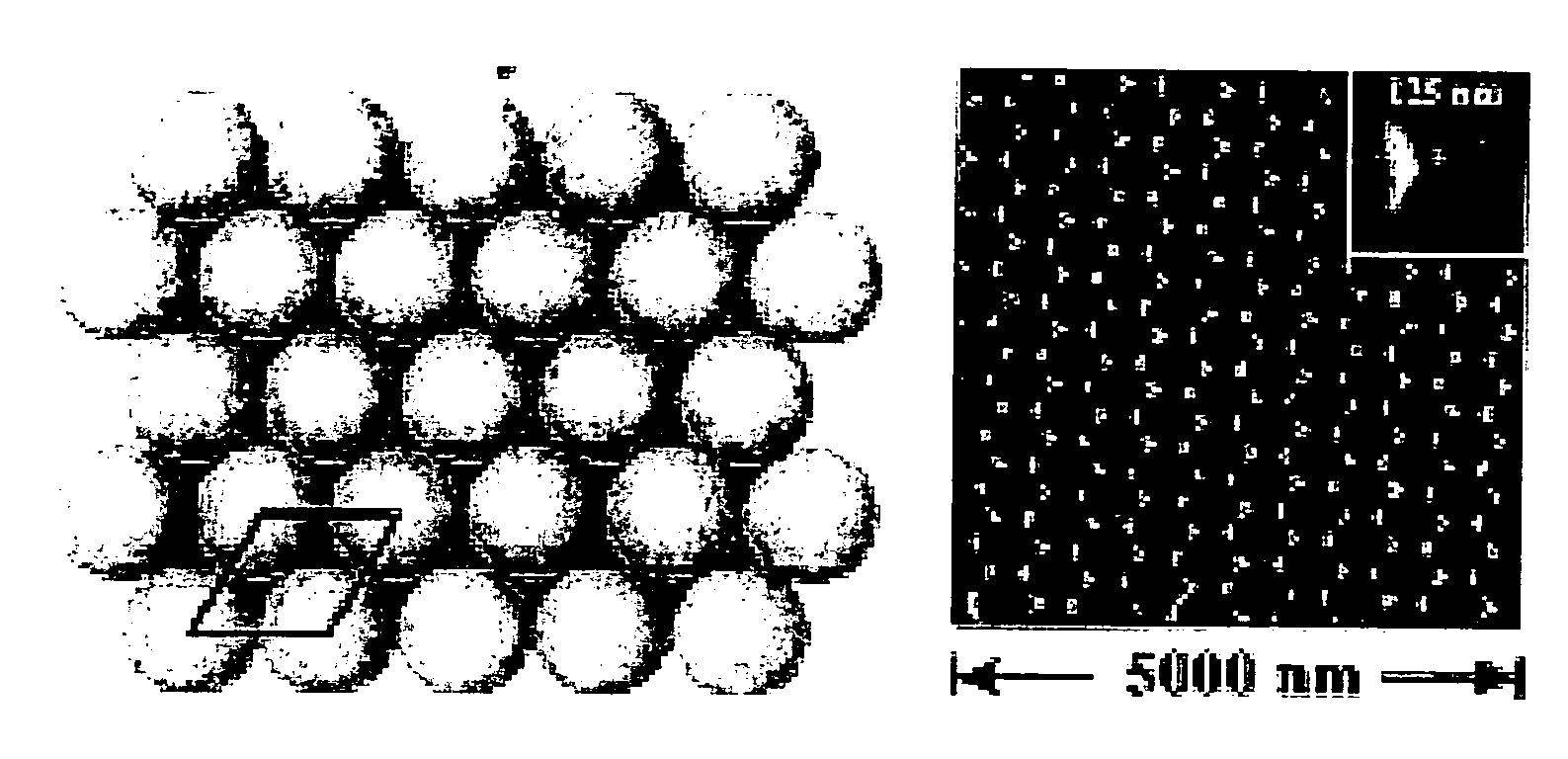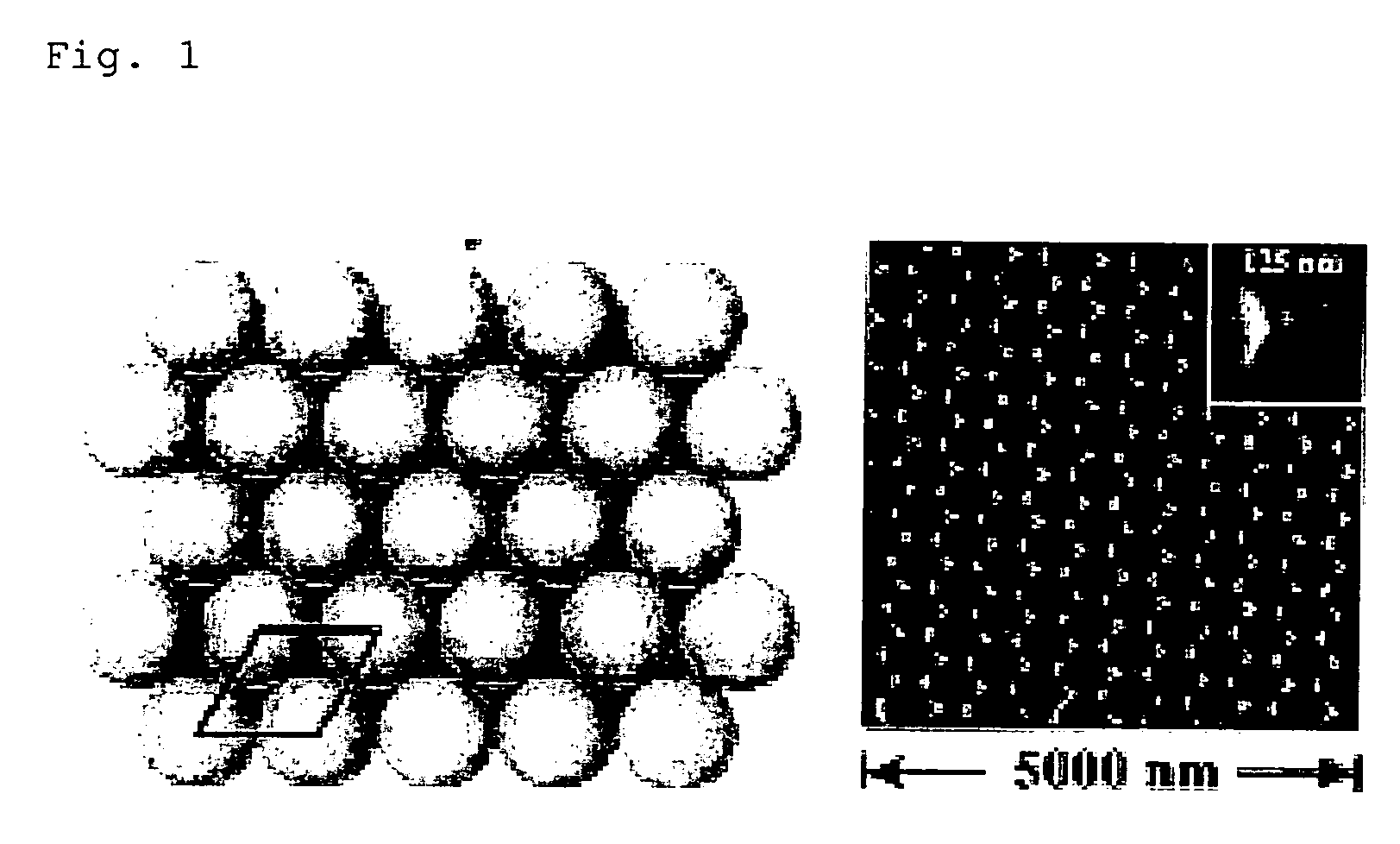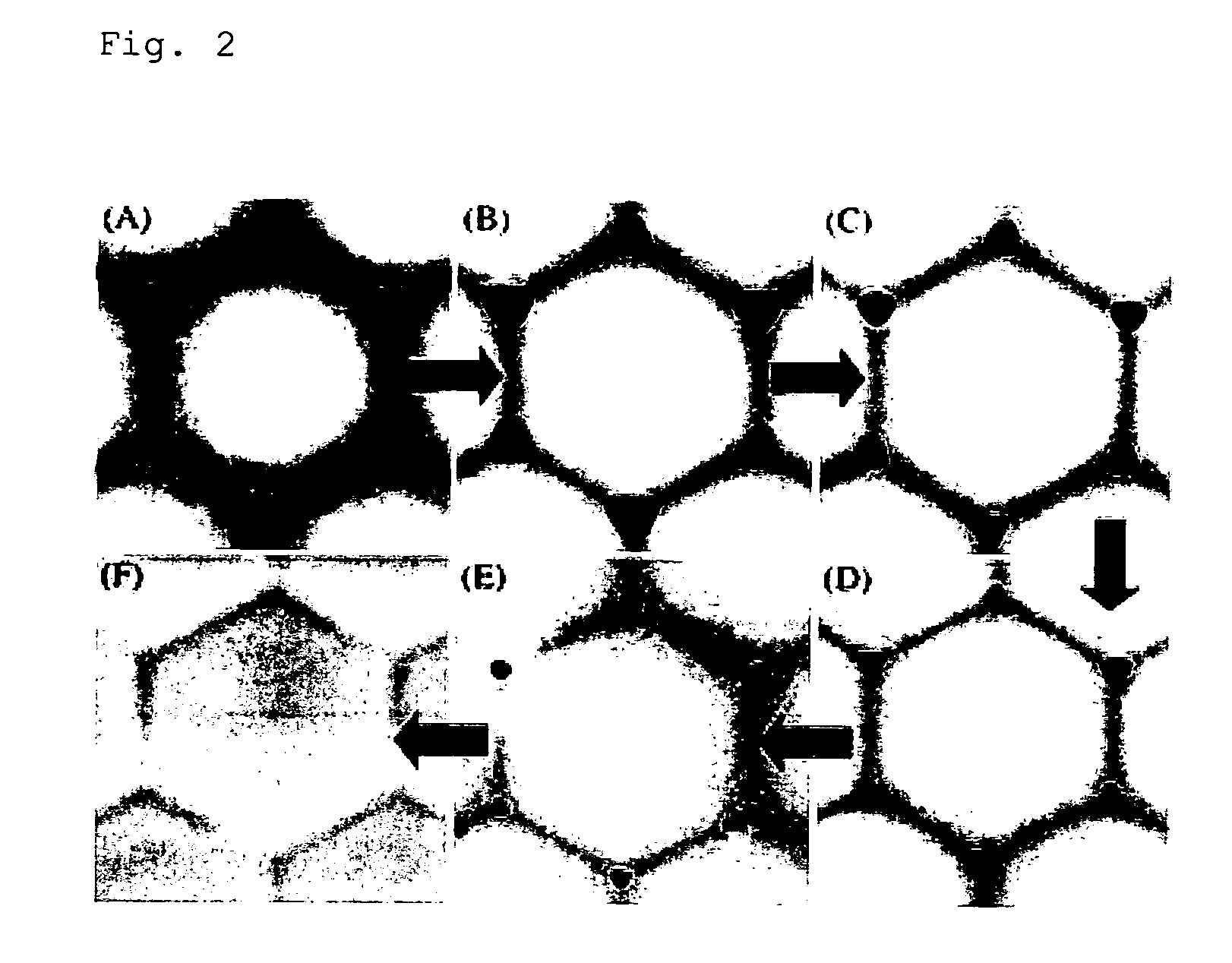Diagnostic nanosensor and its use in medicine
a nanosensor and diagnostic technology, applied in the field of biosensor technology, can solve the problems of limiting the size and shape of metal nanoparticles, affecting the detection and diagnosis of diseases, and affecting the use of medical devices, so as to reduce the size of utilized nanoparticles, improve detection and diagnosis, and high sensitivity and selectivity
- Summary
- Abstract
- Description
- Claims
- Application Information
AI Technical Summary
Benefits of technology
Problems solved by technology
Method used
Image
Examples
example 1
[0064]The two-dimensional ordering of latex particles as a basis for nanosphere lithography (NSL) has been used by us and others in the past1,2,3,4,5,6,7,8. The evaporation or sputtering of different materials through a latex particle mask enabled the production of lattices of triangular islands on various substrates, the shape of the islands being determined by the shape of the aperture between the spheres in the mask. Clearly, the size of the aperture between the spheres depends on the size of the beads in the monolayer. To overcome this limitation, we annealed the monolayer to downsize the apertures in the mask from an initial 200 nm to 30 nm. This result was far beyond our expectations, and was essential for the fabrication of nanodot particles (FIG. 6) and isolated nanorings (FIG. 7). 1 H. W. Deckman, J. H. Dunsmir, Appl. Phys. Lett. 1982, 41, 377.2 M. Giersig, P. Mulvaney, Langmuir 1993, 9, 3408.3 H. W. Deckman, J. H. Dunsmuir, Appl. Phys. Lett. 1982, 4, 377.4 J. C. Hulteen, R...
example 2
[0075]We used the following strategy to specifically bind monoclonal IgG to Au nanoislands that were assembled on transparent or non-transparent substrates.
[0076]A 20 mM solution of succinimidyl 6-[3′-(2-pyridyldithio)-propionamido] hexanoate, (a SPDP reagent) 12 in DMSO (dimethylsulfoxide) or ethanol was incubated with our periodic arrays of nanostructures in the presence of 150 mM DTT (dithiothreitol) for 30 minutes. This procedure allows covalent linkage of thiol to Au nanoislands. 12 N-succinimidyl 3-(2-pyridyldithio) propionate (SPDP reagents) are a unique group of amine- and sulfhydryl-reactive heterobifunctional cross-linkers. Whether they are used to form amine-to-amine or amine-to-sulfhydryl cross-links among molecules, the SPDP reagents produce disulfide-containing linkages that may be cleaved later with reducing agents such as dithiothreitol (DTT). The amine-reactive portion of SPDP reagents is the N-hydroxysuccinimide (NHS) ester. Reactions are most commonly performed in...
PUM
| Property | Measurement | Unit |
|---|---|---|
| size | aaaaa | aaaaa |
| sizes | aaaaa | aaaaa |
| diameter | aaaaa | aaaaa |
Abstract
Description
Claims
Application Information
 Login to View More
Login to View More - R&D
- Intellectual Property
- Life Sciences
- Materials
- Tech Scout
- Unparalleled Data Quality
- Higher Quality Content
- 60% Fewer Hallucinations
Browse by: Latest US Patents, China's latest patents, Technical Efficacy Thesaurus, Application Domain, Technology Topic, Popular Technical Reports.
© 2025 PatSnap. All rights reserved.Legal|Privacy policy|Modern Slavery Act Transparency Statement|Sitemap|About US| Contact US: help@patsnap.com



